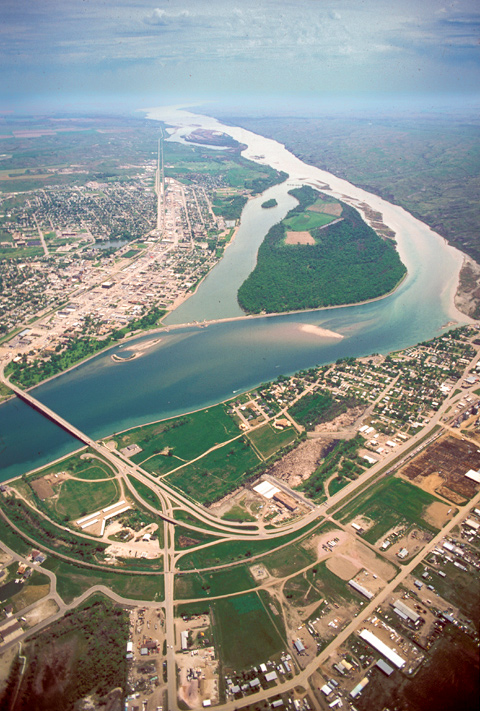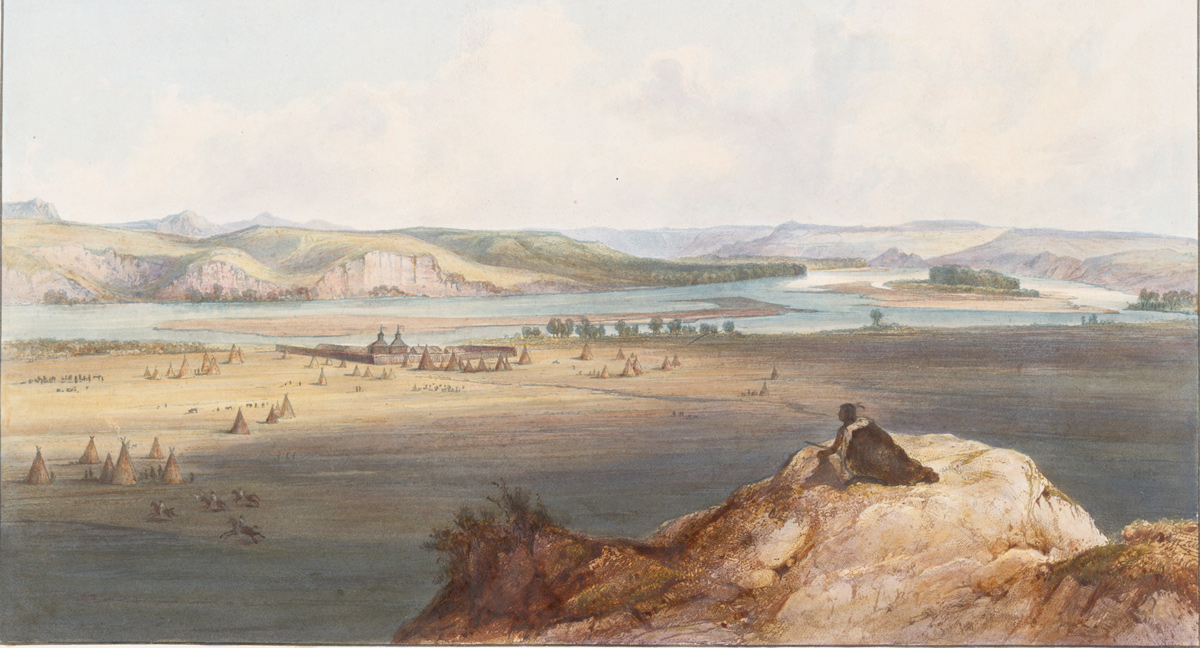At the main meeting and market center for area tribes, which by 1830 would become Fort Pierre, the busiest trading post on the upper Great Plains, Lewis and Clark first met the Lakota Sioux (Tetons) on 25 September 1804. One of Jefferson’s primary political objectives for the expedition was to create a peace treaty and trade agreement with the Tetons, the most potent military and economic force on the lower Missouri. Now face-to-face with them, the captains practiced their diplomacy clumsily and at arms’ length, exchanging both pleasantries and warnings while mutually shoring up their self-confidence with military posturing. Drawing on a considerable ration of luck, the Americans got through the tense meeting without violence.
Later, while waiting out the winter of 1805-6 at Fort Clatsop, Lewis and Clark conceived a plan to seek the aid of Hugh Heney, a Canadian trader they had met at Fort Mandan, in persuading some Teton Sioux to accompany them back to Washington. But that scheme fell apart too, and on 30 August 1806, a few miles downriver from here, they paddled past the watchdogs of the middle Missouri, exchanging from a safe distance volleys of insults and defiant gestures.
Fort Pierre
“Fort Pierre on the Missouri”
by Karl Bodmer (1809–1893)[1]Voyage dans l’intérieur de l’Amérique du Nord, exécuté pendant les années 1832, 1833 et 1834, par le prince Maximilien de Wied-Neuwied (Paris: A. Bertrand, 1840-43), Plate 43.
Rare Book and Special Collections Division, Library of Congress
The first white explorers to reach this part of the Missouri River were the French-Canadians Louis and François la Vérendrye, who passed through in 1743 during their futile search for a transcontinental water route. The first fur-trading post here was built in 1817. In 1822 the Columbia Fur Company established Fort Tecumseh on the south bank of the river, and sold it to the American Fur Company in 1828. Prince Maximilian von Wied and his artist, Karl Bodmer, arrived at the recently relocated—owing to the shifting of the Missouri river—and renamed Fort Pierre Chouteau, in the spring of 1833.
As American technology and western commerce accelerated, the city of Pierre (above) successively became a supply point on the main route of the Western fur trade, a port of call in the steamboat era, a railroad bridgehead, and the capital of the growing union’s fortieth state. Just out of the picture at lower left is Oahe Dam and Lake (see next photo), whose waters spill directly into Lake Sharpe, which is impounded behind Big Bend Dam, only 85 miles downriver.
From Discovering Lewis & Clark from the Air
Photography by Jim Wark
Text by Joseph Mussulman
Reproduced by permission of Mountain Press
Bad River Encounter Site is a High Potential Historic Site along the Lewis and Clark National Historic Trail managed by the U.S. National Park Service. The site is located in Fischers Lilly Park of the city of Fort Pierre.—ed.
Notes
| ↑1 | Voyage dans l’intérieur de l’Amérique du Nord, exécuté pendant les années 1832, 1833 et 1834, par le prince Maximilien de Wied-Neuwied (Paris: A. Bertrand, 1840-43), Plate 43. |
|---|




